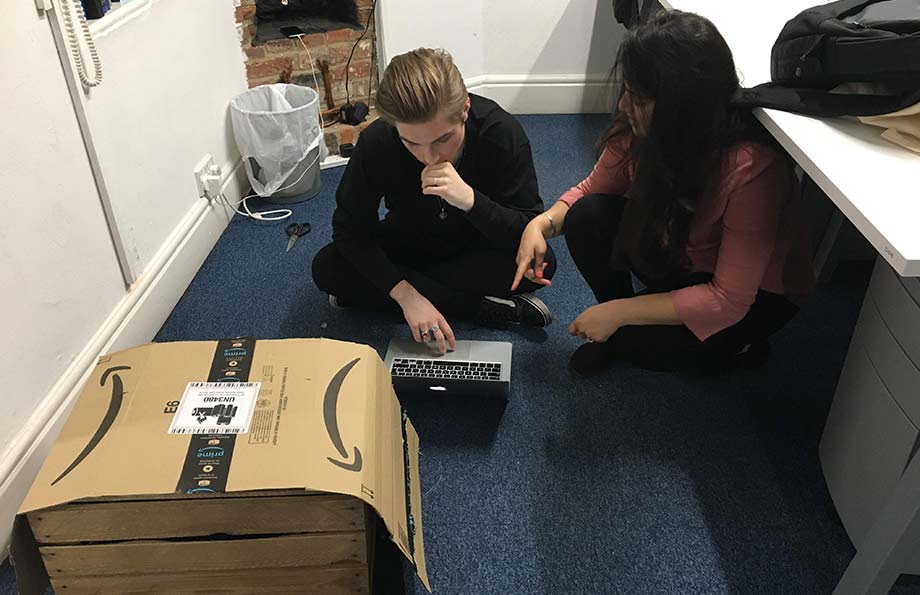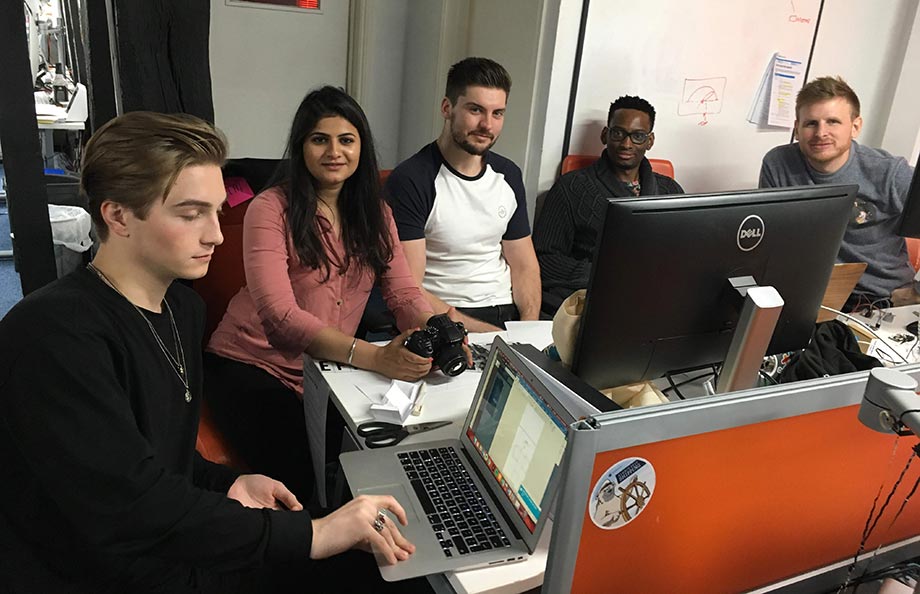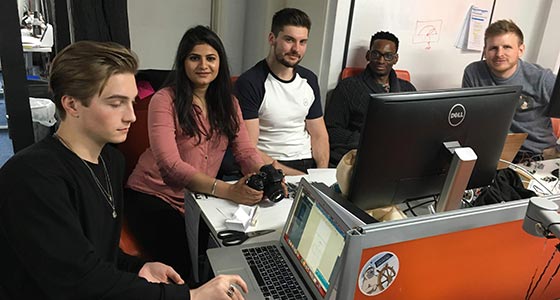In 2018, Cyber-Duck developed several proof of concepts, including a new real-time sales tracking tool: the Tomometer. Combining Pipedrive with a motorised meter held within the Cyber-Duck office via a Laravel-based API, we brought a personal touch to financial tracking activities. Find out more in this article.
Once a year, the Cyber-Duck flock gathers at our Elstree roost to do one thing: innovate through the Quack Hack. We want to utilise the latest technologies to create new platforms and products that will transform how we all do business. To do that, we choose a variety of projects that will disrupt our clients’ industries and our own.
At the latest hack, our team set out to create a new real-time sales tracking tool. In particular, we wanted to look at Pipedrive integrations. Our product would provide our team with a fun, visual and engaging way of monitoring the status of financial targets and activity within the company. Its name: the Tomometer.

Named after one of our New Business Managers – Tom Millson – we wanted to put a face to the usually impersonal activity of financial tracking. Tom graciously let us use his face on our tracking tool. Using a standard motor component, we connected the meter to the internet to create a new Internet of Things application.
Building an interactive real-time sales tracking tool
Like any business, Cyber-Duck has financial and new business targets that we need to hit every year to ensure the business continues to prosper. At present, we do a good job of reminding every employee about our financial targets by providing them with regular updates on progress.
But we wanted to improve the process even more. The Tomometer is a novel way to communicate financial information to our team using Pipedrive integrations. Once live, it would enable us to respond fluidly to business requirements in order to meet our goals.
To build this real-time sales tracking tool, we took our customer-relationship management (CRM) platform, Pipedrive, and integrated it with a Laravel-based API. The API would pull our financial information and send it to a physical barometer tool in the office: the Tomometer. Every time we signed a new deal that took us one step closer to meeting our financial target, the meter would update and let the whole team know how much closer we were to achieving our goal.
All in all, our new Internet of Things application would help to promote communication across the organisation.
How does our sales tracking tool work?
To create the Tomometer, we needed to answer two very important questions. Firstly, how can we obtain sales data from our Pipedrive CRM? And how can we then present that information in a fun and visual way to the team?
In answering these questions, we conceived the initial idea for the Tomometer. Now we just had to find the right technology to build it. Fortunately, our crack team of developers were on hand to help.

Our team collaborated across multiple disciplines to create the Tomometer.
We selected and used the following products and technology for the Tomometer:
- Laravel – a free, open-source PHP web framework, we would use this as the foundation for our tool and use it as an API to receive data from the CRM. It’s worth noting that Cyber-Duck is also an accredited Laravel Partner.
- Pipedrive CRM – Our sales pipeline houses all our business data and the value of projects, everything we needed the Tomometer to display.
- Spark – a free, open-source software web application framework written in Java that would allow us to build the Tomometer quickly and with minimal effort.
- Particle Photon – an Internet of Things developer kit, Particle allows you to seamlessly connect multiple devices via Wi-Fi or cellular connection. We used Particle to connect our app to the physical Tomometer in the office.
Finally, we also used a simple motor with an arm attached (mimicking Tom’s own arm) and colourful meter display as our physical tool. We connected the device to the internet so that whenever we updated our CRM, the API would automatically update the app and Particle would automatically send an instruction to move the physical meter.
Meet the Tomometer
The finished Internet of Things application is an automated financial measurement tool with both physical and digital elements. Not only that, it works as an innovative business budget planning tool, helping the team to understand the business’s needs and to readjust resources accordingly to meet targets.
The team presents their project to the rest of the company. Want to run your own hackathon? We're here to help.
The Tomometer can now help us to communicate important business information to our employees. It will play a vital role within the company, serving as a business budget planning application that tells us something invaluable – it tells us when we can pop the champagne and celebrate smashing our financial targets!
Book a hackathon today
Cyber-Duck runs hackathons every year, but we know that to some people they are still a new concept. A hackathon is an intense design and development sprint, usually conducted over a two-day period. Teams compete against one another to build new products described in a brief.
Just as in previous years, this hackathon was a race against time to deliver a working product before the timer hit zero. We then had to present our product to the company. It’s refreshing to see so many inspirational ideas and so much creative thinking within the company.
Hackathons are fantastic for one thing: they inspire your team to innovate and create exciting new products. Previously, Cyber-Duck has created a blockchain-based charity donation platform and other Internet of Things devices, like our Cuckoo Clock. Needless to say, we’ve benefited from these intense sessions, but we don’t have to be alone in that.
Want your organisation to benefit from a hackathon? Contact our team today and we’ll help you to run your very own hackathon over two or three days. We can also runner shorter, day-long hackathons.
Find out more about the other products from this year's hack:




